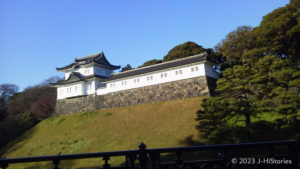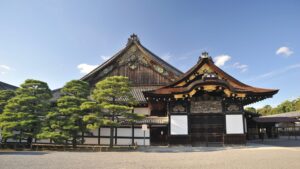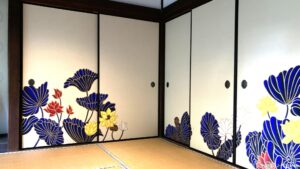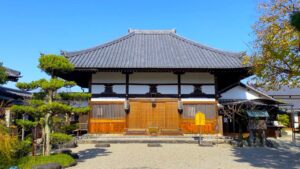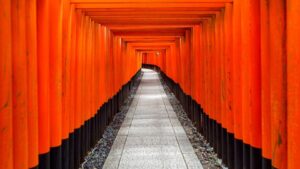Heian Jingu Shrine: When was Kyoto the capital of Japan?
Heian Jingu Shrine enshrines the spirits of the first and last emperors who governed the nation in Kyoto, the old capital of Japan, for over 1100 years, spanning from 794 to 1868. Passing through the vermilion Otorii gate, the Otenmon gate leads you into the interior of the Heian Jingu Shrine. The bright vermillion color […]
Aoi Matsuri Festival, the heart of Kyoto’s graceful festival at two Kamo Shrines
Aoi Matsuri is one of Kyoto's three most famous festivals (Aoi, Gion, and Jidai), held at Kamigamo and Shimogamo Shrines. It is also one of the three major Chokusai festivals (Aoi, Iwashimizu, and Kasugasai) where an imperial envoy delivers an invocation on behalf of the emperor for the safety of the nation and its people. The main […]
The History of Hachiman Deity Worshipped at Usa Jingu Shrine, Protecting Japan and Samurai
Usa Jingu is the head shrine of approximately 460,000 Hachimangu shrines, out of a total of 110,000 shrines in Japan. This makes it the largest number in Japan. The three major Hachimangu shrines are Usa Jingu in Kyushu, Hakozakigu in Kyushu, and Iwashimizu Hachimangu in Kyoto. The deity worshipped at Usa Jingu Shrine, Hachiman Omikami, […]
Daisen Kofun, one of the world's three largest tombs of Emperor Nintoku along with King Khufu's Pyramid and Quing Emperor's Mausoleum
Identified as the mausoleum of the 16th Emperor Nintoku (4th - 5th century, 仁徳天皇), the Nintoku-Tenno-Ryo Tumulus is the largest keyhole-shaped tumulus in Japan, measuring approximately 486 meters in length and 249 meters in diameter for the burial mound, which has a three-tier structure. The tumulus is comparable in size to the Pyramid of Khufu […]
Tsurugajo Castle in Aizu, A symbol of samurai loyalty during the Meiji restoration
Bells rang in the center of the castle town of the Aizu domain, signaling the invasion of Meiji government forces. Despite the Aizu domain's allegiance to the Tokugawa Shogunate and generations of shoguns, the castle fell under incessant bombardment. This is in contrast to the Shogun's residence, Edo Castle, which surrendered without bloodshed. Why did […]
Explore Tokyo’s Imperial Palace: Edo Castle Ruins and the Legacy of the Samurai Era
Explore Tokyo’s Imperial Palace: Edo Castle Ruins and the Legacy of the Samurai Era
Nijo-jo Castle Watched the Rise and Fall of Tokugawa Shogunate
Nijo-jo Castle - a UNESCO World Heritage and National Treasure site - is a residence of successive Tokugawa shoguns in Kyoto. This stunning castle had witnessed the growth, development, fall, and eventual end of the Tokugawa shogunate. What was the final stage of the Tokugawa shogunate that Nijo-jo Castle saw? How did the last shogun, […]
Shorenin Temple, Birth of Buddhism to Save the People
Shorenin Temple Kyoto sheltered and protected two persecuted Buddhists, Honen (1133-1212, 法然)and Shinran (1173-1263, 親鸞), from the Enryakuji Temple of the Tendai sect of Buddhism. Honen and Shinran were revolutionary figures in the Buddhist world whose teaching, later Japanese Pure Land Buddhism, was the chanting of the name of Amitabha Buddha single-mindedly towards enlightenment, trusting […]
Asukadera, the First Full-scale Buddhist Temple in Japan
Asukadera Temple was the first full-scale Buddhist temple in Japan, spending approximately 200m from east to west and 300m from north to south. It was built in the capital province of Asuka in 596, using various advanced technologies in architecture, geology, and painting. In the face of the threat of falling into the tributary nation […]
Fushimi Inari Taisha Shrine, 5,000 Vermillion Torii Gates
Fushimi Inari Taisha Shrine is one of the most notable Shinto shrines located at the foot of Mount Inari, which is considered sacred as a whole, in southern Kyoto. It is the head of over 30,000 Inari shrines across the nation that are prayed to for a good harvest. A grain deity named Ukano-mitama, also […]

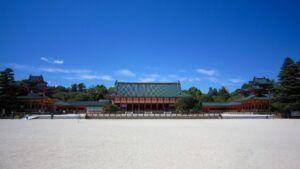

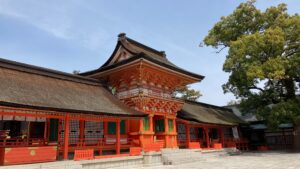
_169sakai-city-300x169.jpg)

